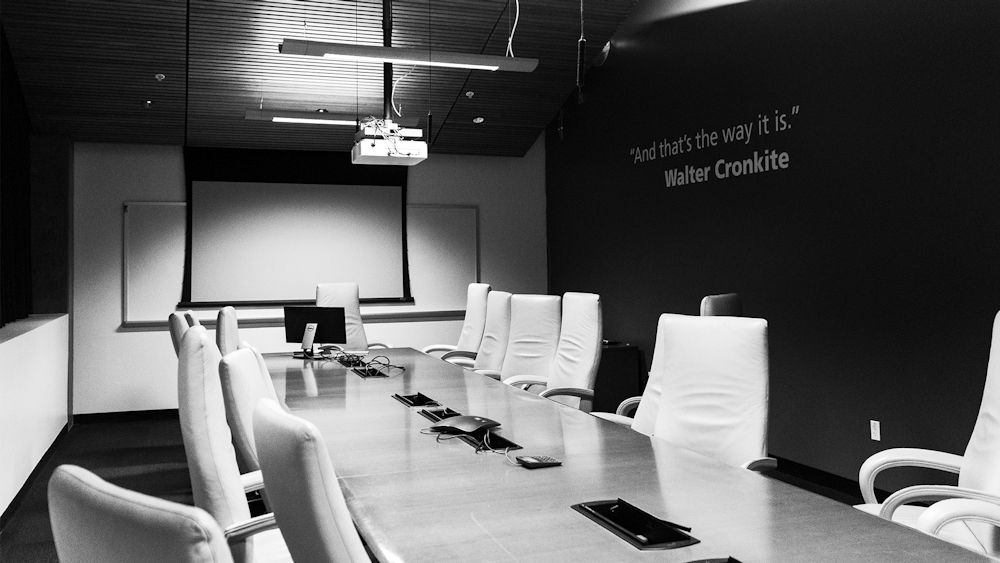In fall 2020, I began my journey at the Cronkite School. I was 17, excited to move from a small northern California town to a large metropolitan area to attend one of the nation’s top journalism schools. I had article ideas bursting from every pore and was itching to dive into the field to find hard-hitting scoops and write impactful journalism.
Less than two years later, I started questioning whether my decision to pursue journalism as a career was the right one.
In the spring 2022 semester, I had my first — and only — high-stress, fast-paced reporting gig through Cronkite. I worked for no pay for around 12 hours per day, three days per week in a newsroom where it felt like the only thing valued about me was how quickly I could churn out content.
My boss made it very clear from the first week that I was going to be on my own in figuring out how to succeed during the semester. There was no guidance on what makes a good story or how to format my stories to fit the news organization’s style. Every single one of my stories was completely rewritten by my boss with no explanation on what he wanted to see more of, planting a seed of distrust in my own writing skills.
Since I had this supposed valuable learning experience, I’ve found myself second-guessing my reporting, struggling with pitching insightful stories and facing massive blocks in writing. I’m seriously considering a career in audience strategy instead of the exhilarating reporting job my teenage self came to Arizona to study for. The only thing I learned in that newsroom is I don’t feel like I can be a reporter anymore.
For months, I’ve discussed this with my therapist, and we have come to the conclusion that I am experiencing burnout and impostor syndrome.
Newsroom intruder
Impostor phenomenon — now more commonly referred to as impostor syndrome — was first defined in a 1978 study by psychologists Pauline Rose Clance & Suzanne Imes as an experience affecting high-achieving professional women who feel they are not as smart or qualified as their peers believe them to be. Nowadays, the term can be applied to just about anyone, whether they are a professional or a student in any field.
Janaé Bradford, a graduate student in Cronkite’s sports journalism program, said she feels impostor syndrome all the time.
“Cronkite is the epitome of a place where you can really get impostor syndrome because, like me, I’m a grad student and I’m in (Walter Cronkite Sports Network), and I’m talking to freshmen who have been doing play-by-play analysis and doing all these things,” Bradford said. “I’m like, ‘How am I going to keep up with them?’ Like, I only have three semesters to do this and they have eight.”
Researchers have found links between the feelings of stress that impostor syndrome brings on and burnout, a condition where one feels so much exhaustion related to work that they feel cynical and negative about their job, significantly reducing their ability to work.
In journalism school, this feeling can manifest itself as not being seen as a so-called real journalist by other professional journalists or sources, feeling that your work is not at a caliber expected of you or that your journalistic skills are not as refined as you feel they should be.
This immense pressure felt by young adult women in journalism school can lead to situations similar to my own, where women feeling burnout before their career even begins leads them to change career tracks within journalism — or even leave the field altogether.
According to a spokesperson for the University, in the 2020-2021 school year, 62.6% of students attending Cronkite were women. In the professional world, women only produce 41% of content in the U.S. news media sphere, according to the 2021 Media Gender Gap report by the Women’s Media Center.
Bradford said while she plans to remain in journalism post-graduation, she noted many women feel pushed out of the reporting field in exchange for other, less public-facing facets of journalism.
“I remember being an undergrad and taking sports marketing classes. Like, it just felt like they were always gravitating a woman toward PR or jobs not related to being in the field or in the locker room,” she said.
At an award ceremony for women in sports and entertainment, Bradford said a friend of hers was the only person nominated for an award who was a reporter.
“She, like, was just talking to me and she got a little emotional. She was just like, ‘I want people when they say, “Women in sports,” I want people to think about us too.’”
Balancing act
Another fire that fuels the impostor syndrome stress in young women in journalism is a male-dominated culture, or “bro culture,” in newsrooms, in which men blatantly or subtly attempt to exclude women in the newsroom from conversations.
In the newsroom that burnt me out from reporting and writing, all four reporters that semester were women. We bonded over a shared stress that came on from simply being inside the building.
Because of this, I did not have to feel worried about experiencing what other women alumni of the same program described as our director’s favoritism toward men.
Alexis Davis, a sports journalism graduate student, said while the men in her classes are generally supportive of the career path their women classmates chose, some of them have taken steps to socially exclude her from conversations. She said it’s well-known that she’s not as knowledgeable about baseball as other sports, which she said some of her male colleagues use against her.
“I can tell when they want to keep the conversation within them, they’ll kind of extend (a) conversation (about baseball) longer than what they normally would,” Davis said. “They also know, dealing with me for all these months now, that I’m not the type of person to just add something to a conversation just to talk if I don’t know what’s going on … And I think sometimes that’s taken advantage of.”
Women are also more likely to be put in a position where they have to choose between their journalism career and home life, especially if they are parents.
Caitlin Fowble, a graduate student in the sports journalism program, said she has already heard this rhetoric before even finishing graduate school.
“A lot of people have told me that, like, as a woman, if I want to be a journalist, maybe I have to, like, sacrifice family life,” she said. “That’s not something that I feel like men hear a lot.”
According to Fowble, sports journalism classes tend to have more men than women in them, defying the gender breakdown of Cronkite as a whole.
According to WMC’s report, sports is the reporting topic with the greatest gender gap, with women only producing 15% of sports content.
“Any woman you see in sports journalism right now has some of the thickest skin you’ll ever see,” Bradford said. “They not only have to be ready to be in these male-dominated spaces, but they’re articulating and breaking down everything that’s happening and they’re doing this with confidence, knowing that there’s going to be someone out there that’s going to try and belittle them for what they’re good at.”
Sarah Heller, a senior studying journalism and mass communication, said the non-sports bureau of Cronkite News appears to have a better balance of men to women than the Cronkite News Sports bureau does.
“My group consists of women and my director is a woman,” she said. “If that’s any indication of what the future of journalism looks like, I’m pretty sure in 20-30 years, women will at least even out the male-female ratio (in the newsroom).”
While Bradford, Davis and Fowble said students, faculty and staff at Cronkite support and welcome gender diversity in the sports newsroom, they agree that there’s still work to be done in order to ensure women journalists feel welcome in these spaces as a whole.
During her undergraduate program at North Carolina A&T, Davis said she attended an ESPN fellowship meant for students enrolled at HBCUs where she met a member of the Cronkite faculty who encouraged her to attend graduate school at ASU, even negotiating a full-ride scholarship at the University for herself and two other Black students.
Davis said Cronkite doesn’t advertise its graduate programs well to students like her at HBCUs, and the only way she even found out about her program was through the Cronkite faculty member at ESPN.
“They (the Cronkite School) say they want to have this more diverse program, that was a point of paying for three Black students … to be here,” she said.
Bradford said Black women have to work much harder to receive the same level of respect as her white male counterparts, which has given her incentive to work in sports journalism and pave the way for future generations.
“Hopefully, if any more Black female journalists come to Cronkite, and they see me attached with the (WCSN), they’ll be encouraged to participate,” Bradford said.
“Women have felt voiceless all the time, especially Black women,” she said. “I want women to know that their story matters. They’re smart enough to be in these spaces, and sports needs us more than we think we do.”
Edited by Sam Ellefson, Alexis Moulton and Greta Forslund.
This story is part of The Spectrum Issue, which was released on April 5, 2023. See the entire publication here.
Reach the reporter at cpedrosa@asu.edu and follow @_camila_aldana_ on Twitter.
Like State Press Magazine on Facebook, follow @statepressmag on Twitter and Instagram and read our releases on Issuu.

Camila Pedrosa is the Editor-in-Chief for The State Press Magazine. This is her fifth semester working with the magazine, and she has previously written for Cronkite News, The Arizona Republic and The Copper Courier.




